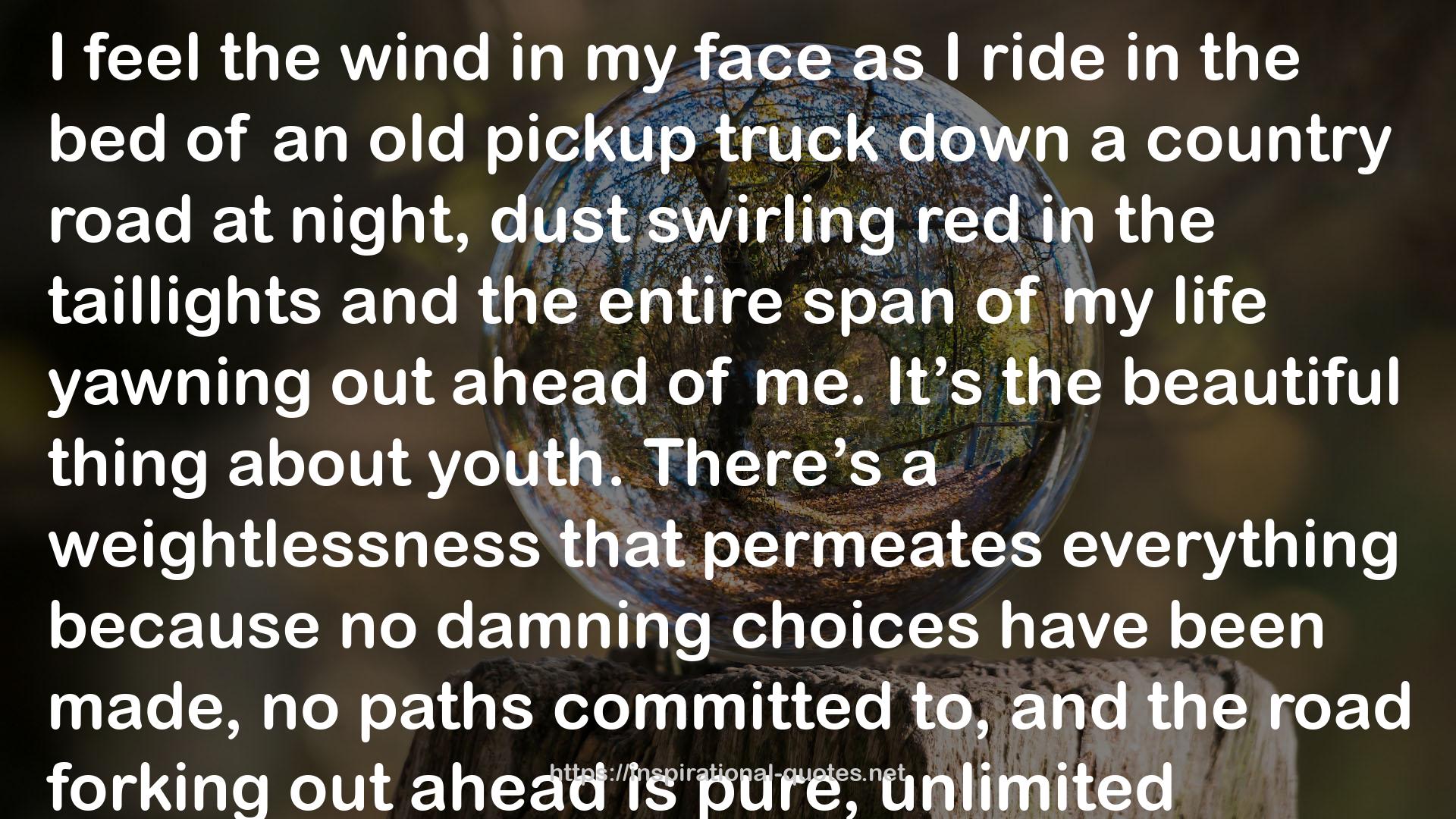39
" We perceive our environment in three dimensions, but we don’t actually live in a 3-D world. 3-D is static. A snapshot. We have to add a fourth dimension to begin to describe the nature of our existence. The 4-D tesseract doesn’t add a spatial dimension. It adds a temporal one. It adds time, a stream of 3-D cubes, representing space as it moves along time’s arrow. This is best illustrated by looking up into the night sky at stars whose brilliance took fifty light-years to reach our eyes. Or five hundred. Or five billion. We’re not just looking into space, we’re looking back through time. Our path through this 4-D spacetime is our worldline (reality), beginning with our birth and ending with our death. Four coordinates (x, y, z, and t [time]) locate a point within the tesseract. And we think it stops there, but that’s only true if every outcome is inevitable, if free will is an illusion, and our worldline is solitary. What if our worldline is just one of an infinite number of worldlines, some only slightly altered from the life we know, others drastically different? The Many-Worlds interpretation of quantum mechanics posits that all possible realities exist. That everything which has a probability of happening is happening. Everything that might have occurred in our past did occur, only in another universe. What if that’s true? What if we live in a fifth-dimensional probability space? What if we actually inhabit the multiverse, but our brains have evolved in such a way as to equip us with a firewall that limits what we perceive to a single universe? One worldline. The one we choose, moment to moment. It makes sense if you think about it. We couldn’t possibly contend with simultaneously observing all possible realities at once. So how do we access this 5-D probability space? And if we could, where would it take us? — "
― Blake Crouch , Dark Matter

